Focusing on soil remediation with fungi
By Ja Schindler, founder of Fungi For The People
The term soil refers to a living material composed of minerals, organisms, and the gasses and water between. Likened to an organ of the Earth, much like our skin, teeming with an enormous diversity of beings both macro and microscopic sharing an array of landscapes, food sources, and social roles. Many factors determine the balance of organisms, and the fate of the soil itself. Naturally speaking the water content, temperature, and pH control the direction of activities going on. Anthropocentrically speaking human activity and interest often effect the fate, as we have invested interests in soil and it’s health.
For many centuries, and still today, healthy soil capable of supporting the plants, fungi, and animals that humans rely on for survival has been one of the main struggles between us. In the past two centuries a new element of struggle over soil has been brought to the forefront of human society: the destruction and toxic pollution of healthy soil for short term, short sighted profits at the suffering of humans and other organisms dependent on the health of that soil.
Since the mid-1980’s research attempts have been made in figuring out ways to promote soil health for degrading some of those industrial pollutants to a state of non-toxicity, with much avail. Some of these approaches have involved enriching polluted soils with mature compost, some have involved enriching with bulk organic materials, others have involved focusing a mass of a single organism such as a fungus on into the soil, while still others involve a holistic approach with plants, fungi, and bacteria. Much of the research has shown excellent results in degrading many toxins, and some overall conclusions could be made to support employing all of these approaches for maximized effect.
Partnering with fungi can open the door to an accelerated process of soil healing. The natural behavior of some fungi to work within and support a larger community of organisms seems to be the key part of their role. Those fungi with known abilities in breaking down complex plant cell structures, the lignin decomposing (white-rot) Basidiomycotina, have been the primary case studies thus far in myco-remediation, but a much wider array of soil borne fungi and endophytes with lesser understood natural roles are becoming more important subjects of inquiry.
Those fungi in the group of plant lignin decomposing Basidiomycotina have been employed mostly because this is the group from which most cultivated mushrooms belong, so there is a great deal of information available on how to grow them. The other reason is that some of the more aggressive plant lignin decomposing fungi (Oysters, Turkey Tail, some Stropharia, etc.) already have highly developed mechanisms and digestive enzymes for pulling apart and degrading very complex carbon based compounds. The lignin found in dense trees turns out to be a very similar structure to many of the heavy toxins needing to be dealt with in soil and water remediation, so these fungi can lend themselves readily to the task.
Plants and fungi have co-evolved over millions of years so that we live immersed in a rich world of plant and microbe diversity. The awareness of importance in this diversity is the basis for most environmental issues, as the forests and wild healthy places which remain harbor the greatest gene pools. There are an enormous amount of fungi and other microbes that have never been studied nor identified, the job is immense and the rapid destruction of intact ecosystems is making the work even more important. The diversity of industrial pollutants is also enormous, and their steady contamination into clean water and soil has only increased in the past century. This wild place of toxicity that we find ourselves in has inspired serious interest in the roles and abilities of fungi to regulate. Fungi not only like to disassemble, they can be very social creatures, living in direct contact with thousands of other very alive beings. We are finding excellent examples of species degrading specific toxins, as well as many species degrading a range of toxins. The search has been on for a while to marriage species and technique with appropriate situations. Working with native fungi in a way that encourages a healthy diversity of other microbes seems to make the most sense in remediation practices.
One of the clear roles that fungi have played early on in mycoremediation studies is that some fungi do an excellent job in supporting and energizing other organisms into remediation activity, just as they often seem to support and energize those same organisms into living healthily in native ecosystems. It is as though the enzymes secreted by many fungi actually stimulate aggressive toxin degradation by other microbes present in the soil as well as plants. If there is a sensible order to it, research findings support the outlook that some fungi can degrade complex toxins such as 4-5 ring PAH’s into simpler toxins more bio-available to other organisms, just as they often do with complex plant materials. Starting with a supporting role, fungi can trigger an aggressive chain of commands in the soil ecosystem toward soil health.
Approaches
There have been many approaches proposed and carried out for working with fungi as a natural remediator in the past few decades. Various areas of focus have been considered such as degrading polycyclic aromatic hydrocarbons (PAH’s), polycyclic chlorine biphenyls (PCB’s), polycyclic chlorine polymers (PCP’s), TNT, neurotoxins, synthetic dyes, water filtration, and airborne pollutants. A range of research projects are cited at the end of the writing
Most soils with the need and potential to be remediated are sites where toxic industrial activities, oil spills, or other accidental discharges of toxic material have left an accumulation of heavy carcinogenic compounds. In many cases there may be plants and fungi actively growing in the contaminated soil, and in other cases there may be heavy deposits of toxins visible to the naked eye. At either end of the spectrum the first step is to get an idea of the level of toxicity and the pH of the soil. If it is affordable to have soil tests taken professionally through a private environmental firm it is worth developing an idea of what you are working with so that later tests can give a better idea of the effect.
Other soil testing resources are local colleges and universities, and many cities have a protocol for safe toxicity levels. If funding is tight, other options can include buddying up with soil research students looking for projects, and getting to know plant and bacterial signatures in relation to toxicity. If you have access to none of these options and know that the soil is toxic, it is at least worth getting your hands on a soil pH test kit from a garden supply store.
The term pH is an expression of nutrient availability through the reading of available hydrogen in the soil, its reading is a direct answer to the diversity of organisms either currently living or potentially living in that soil. The closer to a pH of 7.0 that you can get the more biologically active the soil will naturally become. One of the best ways to adjust soil pH is to amend with organic material such as straw, leaf mold, manure, or wood chips from broadleaf trees such as alder, maple, and oak. Layering these materials on top of the soil and allowing the rain, microbes, and insects to slowly incorporate them is very effective. Turning or tilling these materials into the soil for a more homogenous mixture is even more effective at activating the biological process. Additions of organic material at a rate of at least 20% and up to 80% of the pile or site will ignite an array of biological activity.
Most studies have shown this to be a very important factor in activating toxin degradation with or without introduction if mycelia. This addition of material is referred to as bio-augmentation, and care should be taken to think about the fact that you will be contaminating whatever healthy material you add to the site. I would recommend addressing soil pH before amassing a load of fungal mycelia.
Avoiding temperatures above 120F and below 32F will allow for a much broader range of biological activity. Temps above that limit will kill off most microbes, and promote only heat tolerant (Thermophilic) fungi and bacteria, which is a much smaller range of organisms. Dropping below the lower limit will bring on dormancy, and the pile or site will do little until temperatures rise again.
To accomplish this just think about composting and garden mulching. With composting, fresh new piles of material heat up very quickly at the core, but can be discouraged from going too hot by dismantling the pile and allowing cool air to enter while hot air escapes. Slow composting is preferred for toxin decomposition, and can be accomplished by keeping piles to under 18” and not actively turning them. To keep temperatures up in cold months think about how you might protect plants and garden soil over the winter. By piling layers of straw, covering with cardboard, or building a row-cover you can keep frost from affecting the bio-activity of the site. Available oxygen is also a huge factor, and steps may need to be taken to aerate the pile or site. Ventilation tubes of thick cardboard can be used in a pile or buried in a deeper site. They are often available as waste from carpet stores, and will degrade naturally as the site matures.
There are a range of applications that might make sense for working with fungi in your remediation project, so I will describe a few examples of projects I am currently working on, as well as a pollution source “pre-mediation” project. There are some technical skills involved in growing out mushroom mycelium for use in remediation, but there are some low-tech alternative approaches more recently uncovered that are helping tremendously with this issue. One of the big blockades with mycoremediation is the lack of individuals skilled in fungal culturing, which is a big part of why I offer workshops on cultivation.
Ethically there are a few factors to consider when working with aggressive fungi. First, working with fungi local and native to the contamination site not only ensures that you won’t be introducing an invasive species, it also allows the possibility of working with a fungus that is adapted to the the toxins present. Second, there are research results showing good potential for fungi that are parasitic to vascular plants in being strong remediators, the inherent problem is that promoting their soil-borne reach could lead to the demise of a whole-system approach, potentially worsening the situation. There are more techniques being tried all the time, some of which involve working with fungi to degrade toxins at the source before they enter the soil or water, these seem to be better approaches for applying foreign or parasitic fungi.
Human history is filled with stories and recipes for partnering with plants and fungi for natural human health, and recent years have seen these traditions become re-birthed in Western culture. There is much to learn from our ancestors, and in turn, much to discover in how to partner with Earth’s beautiful other beings in restoring and maintaining ecosystem health.
Project: H.A.R.P. Toxic Compost clean-up.
Location: Portland, Oregon
Project start date: June 1st 2012
Scenario:
During the 12th annual Village Building Convergence in Portland, Oregon I took up hosting a mycoremediation workshop at the Healing Arts Resource Project (www.pdxharp.com). H.A.R.P. Is a project where a collective of natural health practitioners come together to share in their healing arts. They had just purchased a new home for the project in the Sellwood neighborhood, the former sight of a conventional hair salon. One of the big problems with the new location was a very large and unhealthy compost pile in the garden area of the back yard that included tar-based roofing shingles, plastic grocery bags, credit cards, and human hair from the former hair salon.
Earlier in the week another presenter from Chicago, Nance Clem, had deconstructed the old compost pile and moved the soil aside, erecting a new pile with healthy ingredients and a plan to keep it that way. I attended her workshop, and was impressed with her knowledge and outlook on soil health, so I was left with wanting to remediate the pile of soil and the site where the composing had taken place. Two approaches were carried out: a top down mushroom garden bed on the site of the old/new compost piles, and an in-vessel remediation of the old compost.
Twenty soil samples were taken from different points around the compost site and in the old compost, 3 of which were from directly under where the mushroom garden bed was to be installed. The soil tests have not been returned from the lab yet, but it should be noted that no plants were growing in any of the soil up to 2 feet from the compost site, and no plants in the pile itself, a near phenomenon for the lush land of Portland.
The samples were taken at a depth of 1-3 inches, and 2 samples were taken at a depth of 6 inches. Half of each sample has been sent to a soil lab for testing, and the other half I am using to assess for present fungi in the soil willing to be cultured. Testing at home showed the soil pH to average 7.2. At 3-month intervals for a year I will take samples to be tested from the same sites, and that information will be published on my website, www.FungiForThePeople.org .
Pile Site: Stropharia rugoso-annulata (SRA) top-down mushroom bed
Once the samples were taken we installed a 2 x 8 foot patch of SRA on a substrate of Douglas Fir wood chips along the back side of the compost site between the structure and the brick wall that edges the property. It will be completely out the direct sunlight, and the brick wall will insulate heat and help maintain moisture through the dry summer months.
This is a fairly easy technique:
1st step: We laid down a 1/4in sheet of corrugated cardboard as a base for the shape of the bed. This will give the culture of SRA a chance to dominate the fresh Douglas Fir chips before other fungi move up from the soil.
2nd step: We laid down a 3 inch layer of pretty freshly cut Douglas Fir wood chips on top of the cardboard and watered it for about 10 minutes.
3rd step: Two SRA grow bags of 1.5 gallons each were spread out evenly across the layer of wood chips. The grow bags consisted of a matured myclelial mass of SRA grown out on a pasteurized mix of Alder sawdust and Douglas Fir wood chips, so the fungus was already acclimated to the wood chips on a non-sterile substrate.
4th step: We then covered the bed with another 2 inches of fresh Douglas Fir wood chips and watered the patch in for about 15 minutes, before covering with another layer of cardboard to keep the moisture in.
The technique is the same as though you might be starting a mushroom garden bed anywhere, only with the intent of the mycelia eventually diving into the soil layer below and activating the bio-remediation process. SRA does very well in non-sterile conditions, seemingly stimulated by other organisms, and in turn supporting a healthy diversity in the soil ecosystem, a vital process in complete decomposition of most toxins.
Dealing with the old toxic compost:
The second set-up was to work with Hypsizygus ulmarius as a remediation kick starter for the old pile of toxic compost. The approach we used was to fill two 25 gallon half-barrels with the old soil sandwiched between layers of H. ulmarius spawn. One of the barrels was filled directly from the pile, and the other was screened with a ½ inch screen to remove bulk contaminant particles, such as bags, combs, credit cards, and larger pieces of tar-shingle.
The half-barrels have a 2 inch drain hole in the bottom, so we propped them 5 inches off the ground and placed a sediment catch under both of them. They were left outside in the open with just a layer of corrugated cardboard placed over the top, to simulate natural conditions as much as possible. 1 ½ gallons of H. ulmarius spawn grown out on alder sawdust was added to each barrel and evenly layered every 4 inches. Each barrel had approximately 20 gallons of soil added into it. No further bio-augmentation was used. At three-month intervals these barrels will be tested for levels of toxicity and also posted on www.FungiForThePeople.org
For more information on Ja Schindler and his organization Fungi For the People please visit www.Fungiforthepeople.org. He offers courses on mushroom cultivation and permaculture applications, as well as selling mushroom cultures and medicinal extracts. For the past decade he has been studying mycology, and has lived and worked on a progressive mushroom farm, as well as experimenting with remediation in small-scale industrial processes, human activity waste, asphalt degradation/removal, and soil contamination. His upcoming book on mushroom cultivation will also detail a process he has developed for generating pure strains of wild fungi in the open, allowing anyone to develop mushroom spawn anywhere, without sterile conditions on a wide range of substrates.
Email: FungiForThePeople@gmail.com
Cited Works:
Šašek, V., John A. Glaser, Philippe Baveye, 2000. “The utilization of bioremediation to reduce soil contamination: Problems and Solutions.” Nato Science Series IV. Earth and Environmental Sciences vol. 19.
Šašek, V. 2003. “Why mycoremediations have not yet come into practice” The Utilization of Bioremediation to Reduce Soil Contamination: Problems and Solutions, 247-266.Kluwer Academic Publishers, Netherlands.
Cajthaml, T., M. Bhatt, V. Šašek, and V. Mateju. 2002. “Bioremediation of PAH-contaminated soil by composting:A case study.” Folia Microbiologica 47(6): 696-700
M. Bhatt, T. Cajthaml and V. Šašek, 2002. “Mycoremediation of PAH-contaminated soils.” Folia Microbiologica, Springer Netherlands,Volume 47, Number 3 / June.
H. Singh 2006. Mycoremediation: Fungal Bioremediation. Wiley Interscience.
M. Cato 2007. Environmental Research Trends. Nova Science Publishers
A. D’Annibale, F. Rosetto, V. Leonardi, F. Federici, and M. Petruccioli, 2006. “Role of Autochthonous Filamentous Fungi in Bioremediation of a Soil Historically Contaminated with Aromatic Hydrocarbons” American Society for Microbiology
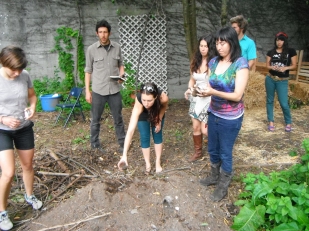
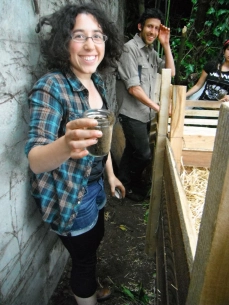
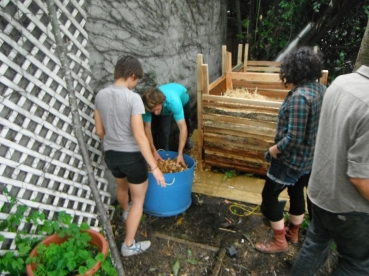
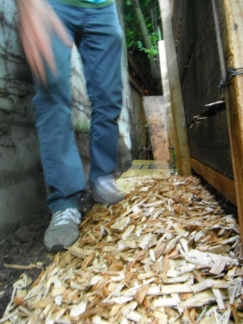
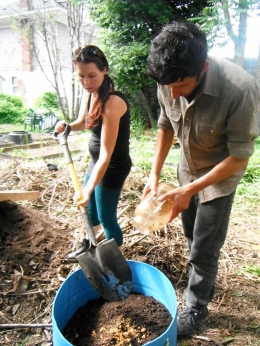

feb 2013 now–how are things going with the harp project?
Hi found to be really practical oriented using the process to solve real time problems.. Iam pursuing Ph.D in India in Myoremediation..can you kindly consult me for any Post Doc. opportunity in near future… Thankyou
Wow, this is so valuable, I’d love to learn more…..
Pingback: What Role Will Mushrooms Play in a Sustainable Future?
Pingback: Creating a Plan | railroadtieremedy